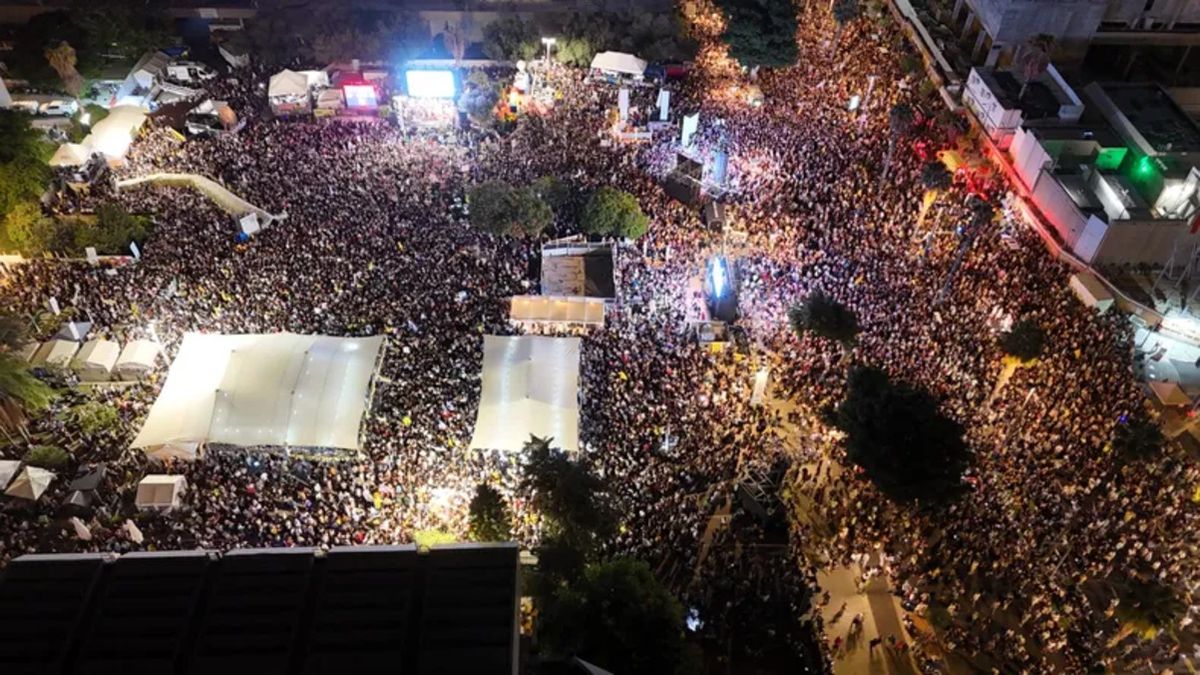“So far this administration, the average fall based on the RIPTE is 2.1%. With which, that sets the pattern that is fully explained by last year’s drop. The acceleration of prices in 2022 erased the small advance that the purchasing power of registered wages had had,” he analyzed. Sergio Chouzadirector of the consulting firm Sarandí.
In this scenario, when considering the factors that influenced a new drop in real wages, louis fieldscoordinator of the Social Law Observatory of the Autonomous CTA, pointed out to Ambit: “What happened in 2022 is a phenomenon that has been repeating itself for a few years: Inflation is not only growing, but also always ends up being higher than what was forecast at the beginning of the year. That causes parities to arrive late. When you look at the RIPTE, you look at registered salaries, which for the most part have parities; those parities are running backwards to inflation. In 2022 it was clear, it started with agreements of around 40%, and then agreements of 70% began to appear. By the end of the year, there were some deals that beat inflation.”
although many agreements prices of different activities were above the inflation accumulated during the past year, several of them “They have not yet been effective”. “Like Commerce, which reviewed parities to almost 100%, but the review becomes effective in the first quarter of this year. The parity negotiation is not mechanically transferred to the calendar year. Another paradigmatic case was Truckers, which closed 107%, but much of it becomes effective in 2023,” Campos explained.
“It depends on each activity. Each parity is a world. When you see RIPTE you see the average. The key is that, at the time of negotiating the first agreement, the percentage of inflation that unions and employers have is a percentage that ends up being much lower than the inflation that finally closes that year. That means that you end up running from behind and that you end up having a large part of the recomposition the following year, ”Campos remarked.
Outlook 2023
Meanwhile, when referring to what may happen with the wages during this year, considering that from the Government they seek to put a ceiling on the 60% in parities, Campos pointed out: “We all talk about 60%, but I don’t think that the first salary agreements end up with a number around that percentage, because it is what has been happening every year. In fact, both unions and employers know that this agreement is not final. What is at stake there is how the agreements are distributed. This year will depend on what happens with inflation and how I know the dynamics of salary reviews. What is negotiated in the first tranche will not be so defining”.
For his part, Chouza analyzed in this regard: “I think that everything is going to play out based on how the inflationary trajectory of this year is. Because an inertia of parities is dragging on, which has been traveling in the area of between 90% and 100%, obviously with a lot of heterogeneity by activity sector, but which was adjusted, updating based on the inflation forecasts for the last quarter of 2022. That is to say, taking as consideration the expectation of annual inflation in the area of 100% that it left last year”.
“Therefore, if there is a break in the upward curve that was verified throughout the second half of last year, that will guarantee a recovery in wages. Obviously, the more inflation slows down, the more generous this wage recovery will be,” remarked the director of the consulting firm Sarandí, who added: “On the other hand, if inflation returns to around 6%, annualized in the 100% zone, possibly you will remain in a saw effect, with a few months of recovery and another of decline. The great challenge of the Ministry of Economy has to be in taking these consistent steps to lower inflation”.
Meanwhile, as detailed Eugenio Mari, Chief Economist of the Liberty and Progress Foundation, “Argentine real wages have been falling for a decade”. “In real terms, the RIPTE fell 24% since 2013 (highest in the last two decades). On the other hand, if we measure the RIPTE in dollars, we see that in 2017 it was US$1,400 while in December 2022 it was US$597. This process also took place in the midst of a de facto labor precariousness, since while registered private salaried employment is stagnant, informal or ‘grey’ employment has risen significantly,” he explained.
“For this year we do not expect a change in this trend. Registered wages could fall by up to 5% in real terms on average, although with heterogeneity between the different sectors. A scenario of accelerating inflation will be combined (prices would grow 106% in 2023) with a consolidation of the recession. In total, we expect economic activity to record falls of the order of 3% per year in the second half of the year, with its natural effect on employment and wages”, stressed Marí, who concluded: “The recovery of the purchasing power of remunerations requires that the economy and workers gain productivity. And this is only possible thanks to an investment and growth shock. Something that will not happen if structural reforms are not carried out on the Argentine economy”.
Source: Ambito




